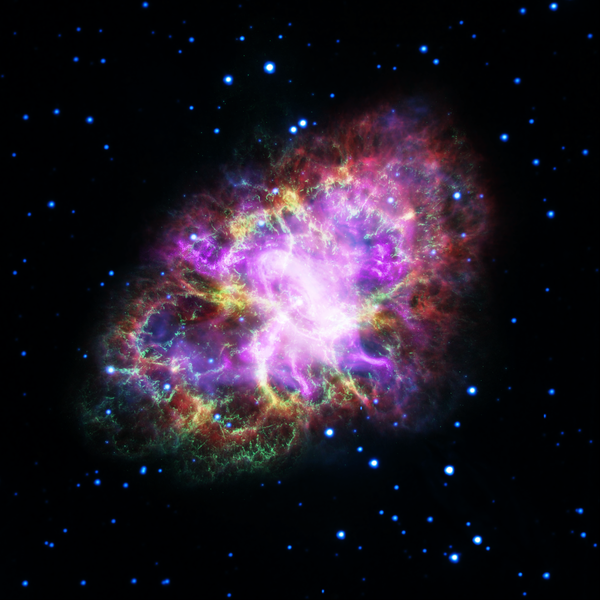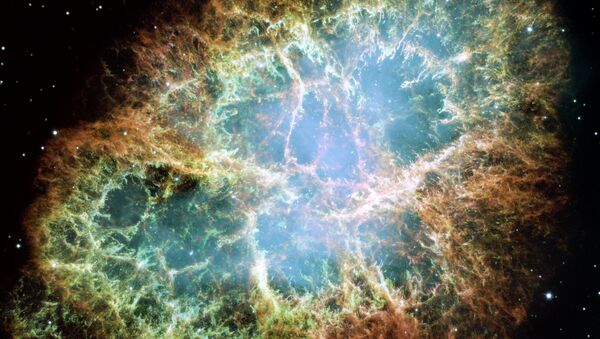Telescopes from all sorts of nations, agencies and places on the electromagnetic spectrum have collaborated on this. Photo credits include NASA, the European Space Agency, the National Radio Astronomy Observatory, the National Science Foundation and the University of Buenos Aires.
NASA color-coded the image to show which sections of the composite photo came from which telescope: infrared photos from the Spitzer Space Telescope (yellow) and Hubble Space Telescope (green), radio from the Karl G. Jansky Very Large Array (red), ultraviolet from XMM-Newton Observatory (blue) and x-ray from Chandra X-ray Observatory (purple).

"These new images are providing us with a wealth of new detail about the Crab Nebula," said Gloria Dubner of the Institute of Astronomy and Physics. "Though the Crab has been studied extensively for years, we still have much to learn about it."
The supernova, astronomical designation SN 1054, left behind a cloud of gas and dust with a neutron star comparable in size to Hong Kong. It may be small, but it's also a dynamo that completes 30 rotations in a single second.
The neutron star is also a pulsar, a highly magnetized star that shoots out beams of electromagnetic radiation into space. These beams are powerful enough to warp the nebula itself, making it a complex and fascinating subject of observation.
Almost a thousand years ago, medieval humans looked up to find a new object in the sky, brighter than anything save for the sun and moon. Less than two years later, the object vanished. Chinese astronomers in the Song dynasty called it a "guest star" – and they weren't far off. They were observing a supernova 6,500 light years away that led to the creation of the Crab Nebula.
"According to records, the bright source was visible during the daytime for 23 days, shining six times as brightly as Venus. Those well-versed with the night sky would have been able to see it for 653 days – almost two years – with the naked eye," wrote Space.com. Japanese, Arabic and Native American astronomers also took note of the strange phenomenon. The Crab Nebula remains visible today, albeit not to the naked eye.
The images were taken a few years ago, but astronomers have been analyzing them to learn more about how supernova remnants work. Viewing the image through different wavelengths gives scientists multiple perspectives from which to study it.


